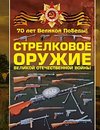
17th-century rebellions
Source: Wikipedia. Pages: 44. Chapters: Bacon's Rebellion, Bakhtrioni Uprising, Bankaw Revolt, Chiprovtsi Uprising, Fedorovych Uprising, Guo Huaiyi Rebellion, Irish Rebellion of 1641, Ivan Bolotnikov, Jelali revolts, Khmelnytsky Uprising, Kostka-Napierski... Viac o knihe
Produkt je dočasne nedostupný
16.54 €
bežná cena: 18.80 €
O knihe
Source: Wikipedia. Pages: 44. Chapters: Bacon's Rebellion, Bakhtrioni Uprising, Bankaw Revolt, Chiprovtsi Uprising, Fedorovych Uprising, Guo Huaiyi Rebellion, Irish Rebellion of 1641, Ivan Bolotnikov, Jelali revolts, Khmelnytsky Uprising, Kostka-Napierski Uprising, Lubomirski's Rokosz, Moscow Uprising of 1682, Pawluk Uprising, Pueblo Revolt, Rappenkrieg, Revolt of the Barretinas, Revolt of the papier timbré, Revolt of the Three Feudatories, Revolt of the va-nu-pieds, Sangley Rebellion, Second Brotherhood, Second Tarnovo Uprising, Shakushain's Revolt, Solovetsky Monastery Uprising, Streltsy Uprising, Swiss peasant war of 1653, Tamblot Uprising, Western Rising, Zebrzydowski Rebellion, Zhmaylo Uprising. Excerpt: The Khmelnytsky Uprising, was a Cossack rebellion in Ukraine between the years 1648-1657 which turned into a Ukrainian war of liberation from Poland. Under the command of Hetman Bohdan Khmelnytsky, the Zaporozhian Cossacks allied with the Crimean Tatars, and the local peasantry, fought several battles against the armies and paramilitary forces of the Polish-Lithuanian Commonwealth. The result was an eradication of the control of the Polish szlachta and their Jewish intermediaries, and the end of ecclesiastical jurisdiction for the Latin Rite Catholics (as well as Karaites, and other arendators) over the country. The Uprising has taken on a symbolic meaning in the story of Ukraine's relationship with Russia. It resulted in the incorporation of eastern Ukraine into the Tsardom of Muscovy at the Pereiaslav Agreement, where the Cossacks swore an oath of allegiance to the tsar. This, according to the poet and artist, Taras Shevchenko, brought about his people's 'enslavement' under Russia. The Uprising started as the rebellion of the Cossacks, but as other Orthodox Christian classes (peasants, burghers, petty nobility) of the Ukrainian palatinates joined them, the ultimate aim became a creation of Ukrainian autonomous state. The Uprising succeeded in ending the Polish influence over those Cossack lands that were eventually taken by the Tsardom of Russia . These events, along with internal conflicts and hostilities with Sweden and Russia, resulted in severely diminished Polish power during this period (referred to in Polish history as The Deluge). The failure of the Cossacks to consolidate their victory led to the Ruin (Ukrainian history). Polish-Lithuanian Commonwealth in 1648With the creation of the Polish-Lithuanian Union in 1569, a growing number of Ruthenian lands were gradually absorbed under the control of a powerful aristocratic republic-the Rzecz Pospolita. In 1569 the Union of Lublin granted the southern Lithuanian-controlled lands of Ruthenia--Galicia-Volhynia,
- Vydavateľstvo: Books LLC, Reference Series
- Formát: Paperback
- Jazyk:
- ISBN: 9781155305585


 Anglický jazyk
Anglický jazyk 



 Ruský jazyk
Ruský jazyk 





